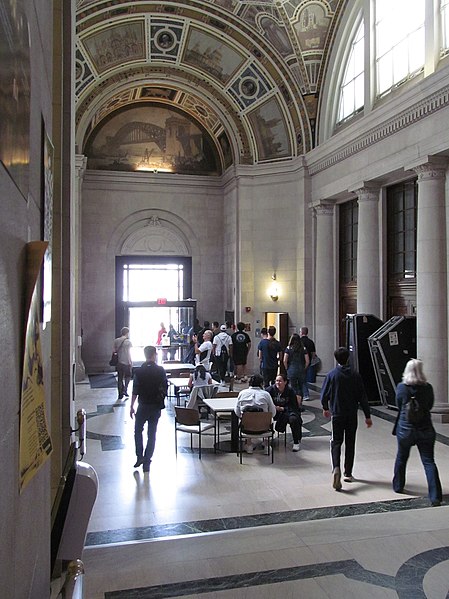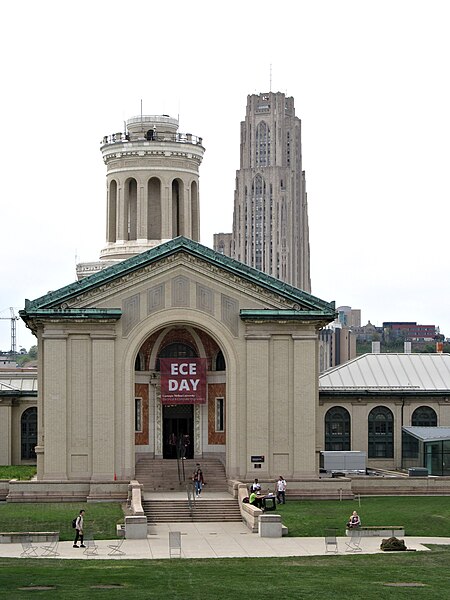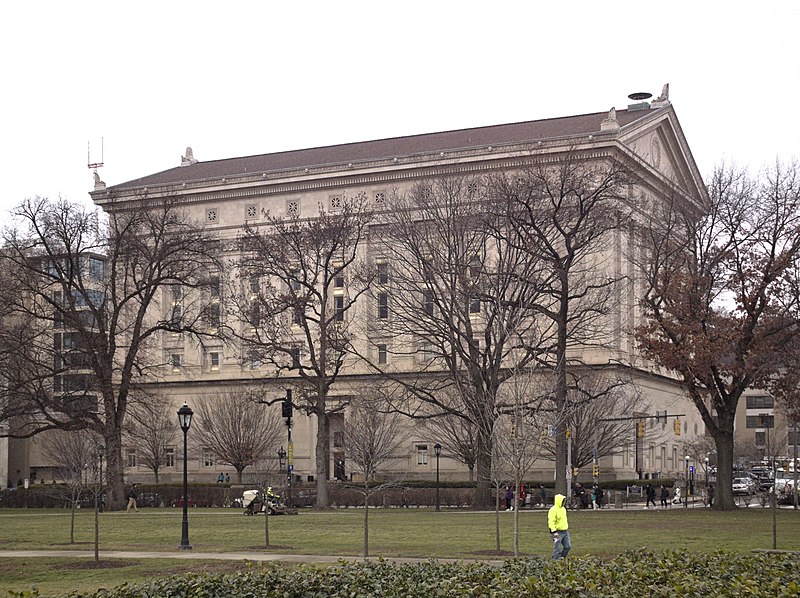
A modernized form of classicism, or a classicized modernism, makes an attractive apartment block on Ellsworth Avenue at the western edge of Shadyside. It is mostly a group of rectangular boxes, but a few classical details—like the Vitruvian-scroll molding above the third floor—give it some character. Father Pitt suspects that it has lost a cornice; it might have been late enough to do without a cornice, but that Vitruvian scroll looks as though it ought to be echoing something at the top of the building, and slight signs of damage up there suggest that something was peeled off at some point.
Addendum: Thanks to the research of a kind correspondent, we now have a picture of Cathedral Mansions in 1929, and it does indeed have a proper cornice.
Another addendum: Another correspondent provides the information that the architect was John M. Donn, the Washington (D. C.) architect who also designed the Investment Building downtown. The information comes from an Iron City Sand and Gravel advertisement in the Pittsburg Press, Monday, November 22, 1926 (page 30).


























